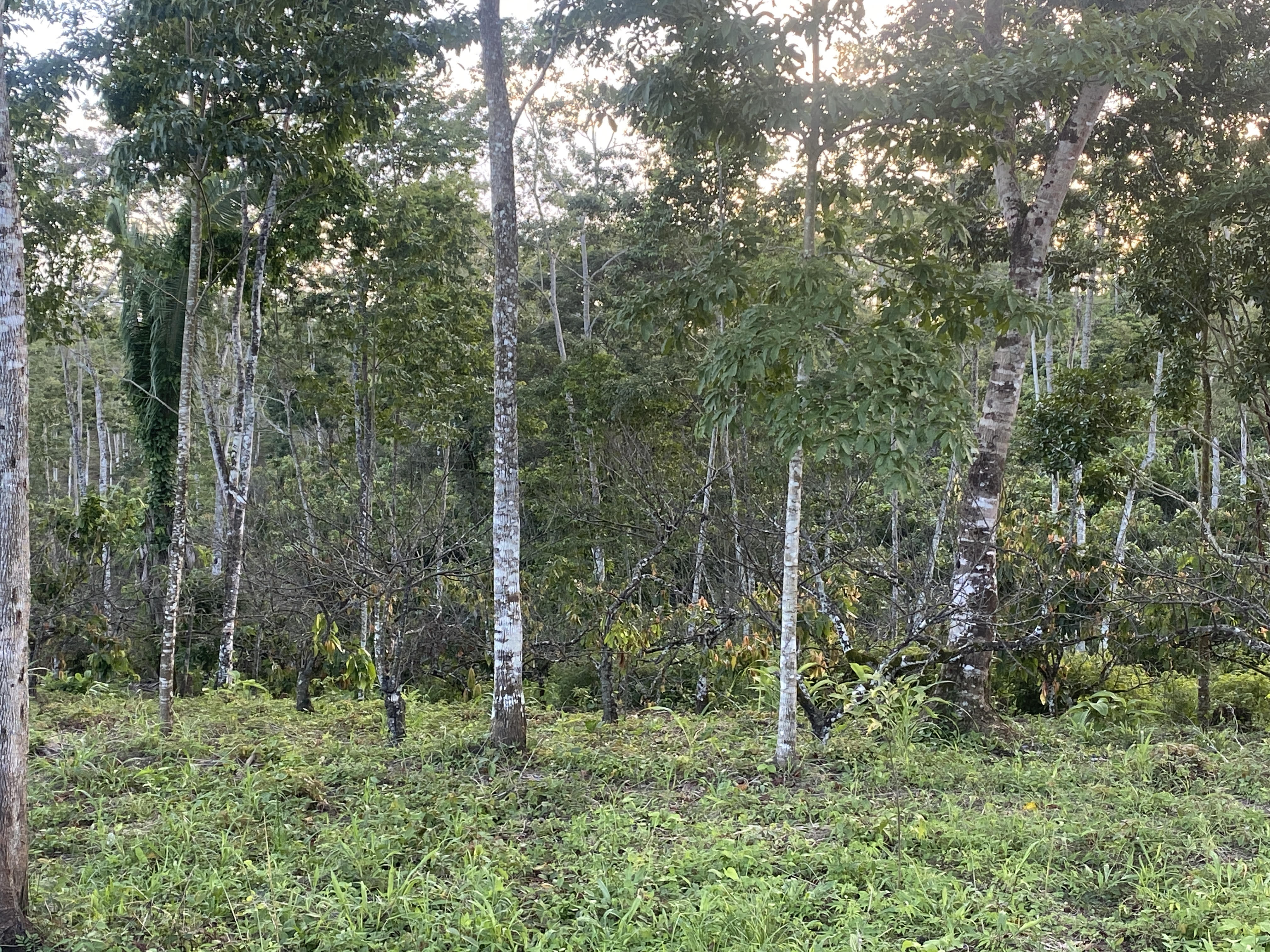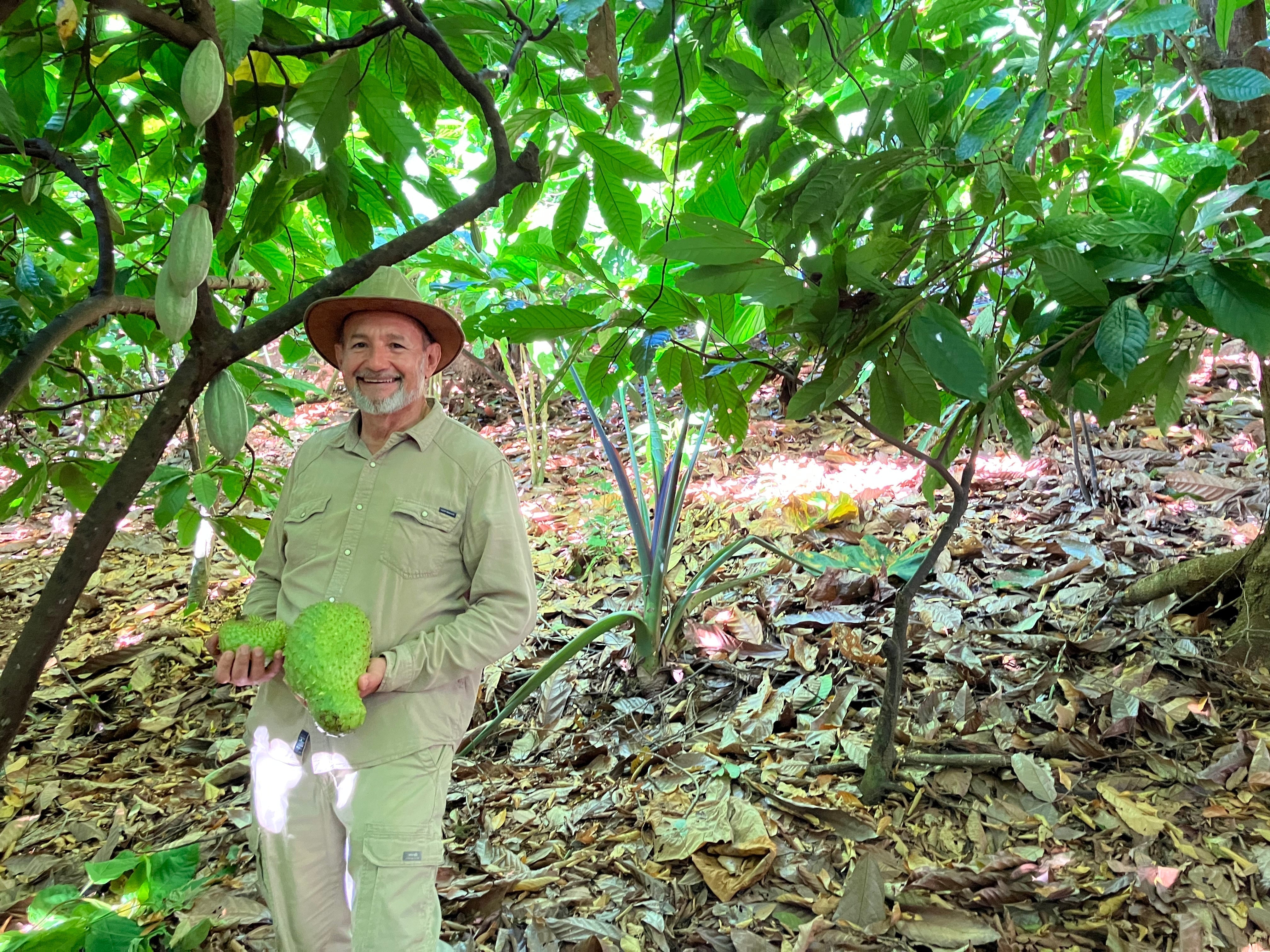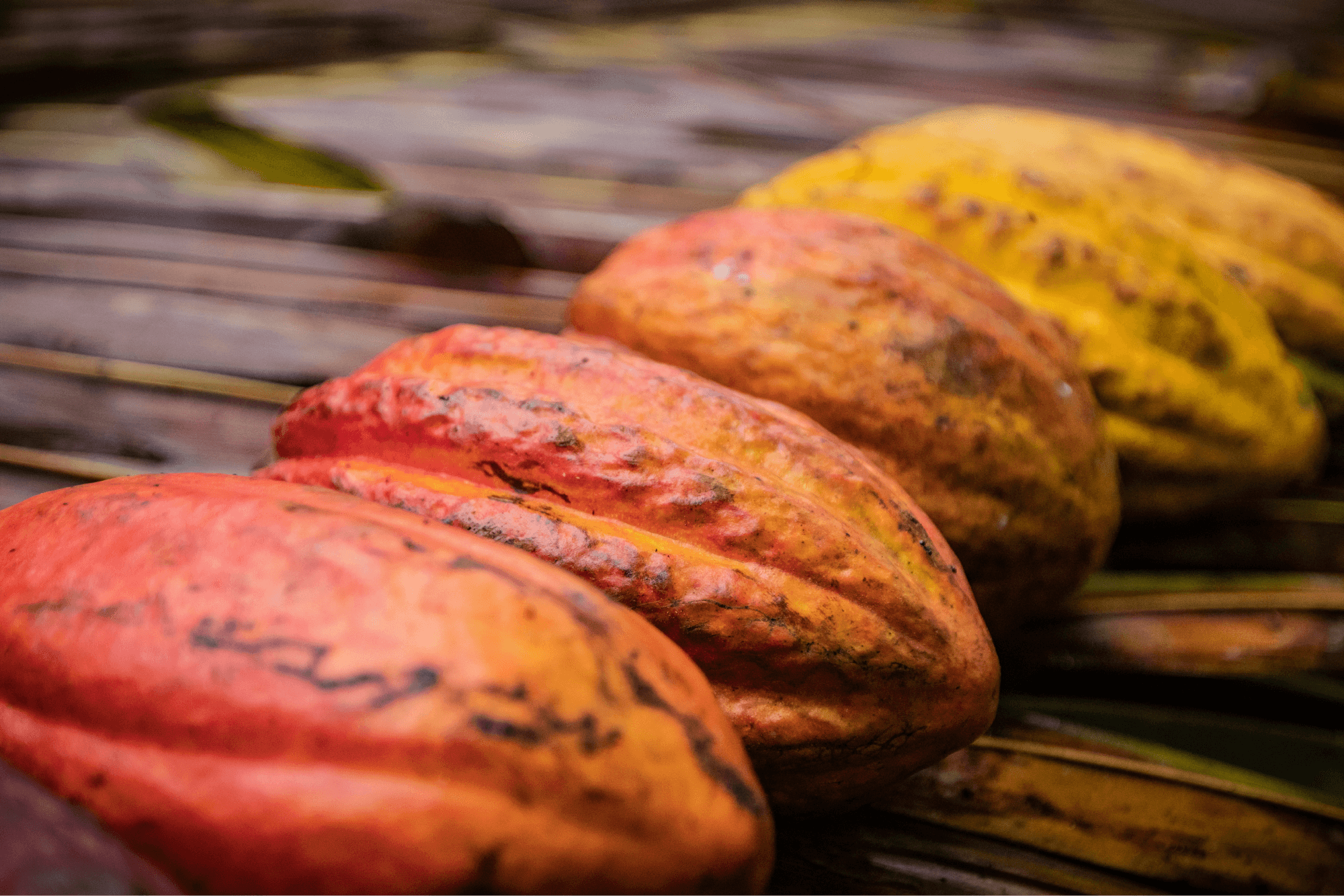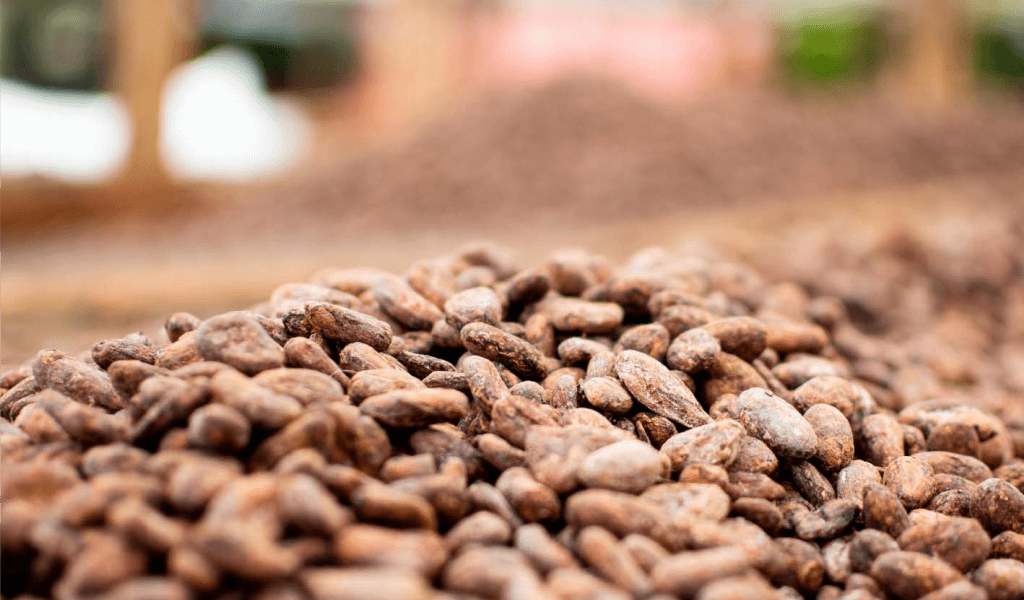Happy Valentine’s Day! Roses are red, violets are blue, the cocoa market is complicated, here is our verbose gift to you 💝
I’ve been meaning to write a third edition of this now quite well-read series on WTF is going on in the cocoa market, and struggling to get it out. Why? The outlook is less clear now. The signals in the market are both bullish (i.e. favoring higher prices) and bearish (i.e. favoring lower prices).
The futures market itself has been as volatile as ever over the last few months, from a historical high of $12,931/MT back on December 18, 2024, to single-day trading spans of over $1,300/MT (Dec 30). Near-term futures contracts have been trading consistently at ~$10,000/MT since December. Depending on who you talk to, either a big crash is imminently looming over all of our heads, or there is no significant downward price adjustment in sight for at least another 12 months.
Here’s a collection of the perspectives we are hearing / seeing / intuiting:
Bullish, favoring higher prices:
- We entered the 2024/25 crop year on October 1st with the headwinds of three consecutive deficit years behind us. The latest calculations for the 2023/24 deficit tally it around 478,000 tons - 11% of total production. Global cocoa production fell 14% in the 2023/24 season to only 4.2m metric tons, down from 4.9m in the previous year.
- Certified stocks at the terminal markets is a critical element supporting higher prices. These stocks represent the back-up supply available for processors to grind in the event that current crop levels are not sufficient for their needs. In the United States, we started the year at just about 40% of the stocks we started with in 2023/24. By late January, we had reached a 21-year-low of available stocks. If the crop does not rebound enough in this current season, we will literally run out of cocoa to supply the market. This article (also published on Valentine's Day) makes it clear how serious of an issue this tightness of supply can be for the market.
Image courtesy of StoneX
- While some analysts are indeed projecting a surplus in the current crop year, others believe we will see yet another year of deficit. For example, JPMorgan expects a deficit of 40,000 tons in 2024/25 (revised from an earlier projection of a 108,000 ton deficit).
- Structural issues in Ghana and Cote d’Ivoire have not been adequately addressed. Farmers are earning only $3,210/MT in Ghana and $3,060/MT in Cote d’Ivoire (actually lower today due to currency volatility, closer to $2,830/MT) – ~30% of futures market prices, and significantly lower than growers in other countries are earning. These prices are insufficient to stimulate the investment in farms needed to combat disease and are continuing to drive destruction of cocoa farms for gold mining, conversion into alternative crops that are more profitable like palm or rubber, and abandonment of farmland to seek jobs. It is well known that the average cocoa farmer population in these countries is already over 50, and young people are not being drawn into cocoa production given the plentiful challenges.
- Cote d’Ivoire is expecting one of the worst mid-crop harvests in decades, down about 40% from yearly averages. Weather continues to be an ongoing problem in western Africa, with the area now facing the harshest Harmattan season since 2019. These annual dry and sandy winds can have a significant impact on the mid-crop, which figures into the annual totals for Ghana and Cote d’Ivoire and can contribute to overall supply/demand imbalances.
- The European Union Deforestation-free Regulation (EUDR) has been postponed for a year, but will be coming into effect at the end of 2025. It is still unclear how many growers are truly prepared for compliance and how these requirements will impact the availability of cocoa for the European market, which represents 60%+ of global demand. If not enough growers / suppliers are prepared, we will see continued tightening of available supply for that critical market.
- Swollen shoot disease continues to be a threat to the short, medium and long term viability of cocoa farming in Ghana and Cote d’Ivoire. Over 25% of the existing cocoa farm area in Ghana is believed to be infected, with 81% of a key growing region infected. Up to 30% of farms in Cote d’Ivoire could be impacted by the disease. It seems like very little is happening to actively reign in this issue. Trees need to be uprooted and burned, and soil needs to be treated, in order to prevent ongoing infection. Where are the huge control and plant campaigns financed by multinationals? Well… see structural issues above.
- Demand destruction is not happening as aggressively as the confectionery industry had hoped. Reports today of Valentine’s Day sales are showing very strong results (up by 500%+!), despite elevated prices.
Bearish, favoring lower prices:
- As of Jan 30th, Ghana’s graded production had reached over 542,000 tons, which is stronger than last year and essentially in line with COCOBOD’s projections of 650,000 tons for the 24/25 crop.
- A few analysts are projecting a surplus for the 24/25 crop, ranging from 50,000 to nearly 100,000 tons. Analysts are projecting higher surpluses for the 25/26 crop, mostly due to demand destruction.
- Demand destruction is slowly starting to happen, in the single digit percentage drops. According to Barchart, in January:
- The European Cocoa Association reported that Q4 European cocoa grindings fell -5.3% y/y to 331,853 MT, the lowest in more than 4 years.
- The Cocoa Association of Asia reported that Q4 Asian cocoa grindings fell -0.5% y/y to 210,111 MT, also the lowest in 4 years.
- The National Confectioners Association reported that Q4 North American cocoa bean grindings fell -1.2% y/y to 102,761 MT.
- Major confectionery companies are signaling that they are starting to see a slowdown in their demand for cocoa (see Mondelez, Hershey, etc). This appears to be driven by a combination of the industry switching out cocoa butter and cocoa ingredients from their products (for CBEs, etc), shrinkflation, and a bit of consumers buying less. Barry Callebaut reported a 3% miss of their sales targets during the second half of 2024. They also reported a 70%+ increase in cocoa costs during this time.
- Additional regulations that would have driven increased enforcement of supply chain sustainability issues in Europe (CSDDD, CSRD) are being dramatically watered down and are unlikely to have a material impact on availability of cocoa in the future.
- The weather has been more favorable this year in Latin America and other regions, leading to stronger crops than in previous years.
- Large planting projects are developing in Latin America and other geographies, which will likely materially influence cocoa supply within 2-3 years.
Based on the above, it is easy to understand why there is uncertainty about the outlook for the 2024/25 crop year and what this will mean for prices.
In addition to the lack of clarity from these many factors, there is ongoing uncertainty that will continue to influence the cocoa market:
- Trade Wars and unpredictable tariffs;
- Geopolitical Uncertainty, and related logistical uncertainty – what will traffic through the Panama Canal look like if the U.S. seeks to take control? What will freight routes through the Red Sea and Suez Canal look like if the U.S. attempts to occupy Gaza?
- Climate Change, including both the increased intensity and frequency of major weather events as well as ongoing changes in seasonality of climate conditions. A new report shows we are already past the tipping point of extreme heat deeply threatening cacao production across West Africa.
As a relatively tiny specialty importer, where does that leave us?
After peaking over $12,000/MT in December 2024, near-term futures contracts have persisted around (and mostly above) $10,000/MT. The overall dynamics of supply scarcity have continued into 2025. There continues to be intense competition in regions across Latin America and East Africa for supply, as concerns around ongoing global deficits persist and larger regional and/or multinational buyers continue to be present in historically more isolated cacao sourcing regions.
Liquidity (access to sufficient cash) is a significant challenge for most of our partners at origin, who now require 3x the funding as previous years in order to buy cacao from farmers in increasingly competitive conditions. Lenders are not necessarily inclined to increase their loans or lines of credit to these companies and cooperatives due to fears of ongoing volatility in cocoa prices (see: rumors of a significant drop in the market). Some of our partners have reported overwhelming debt, making it difficult for them to sustain their businesses.
We are pre-financing many of our partners to enable them to purchase the cacao needed to fulfill our contracts and to secure volumes for our clients. This means that Uncommon is feeling the price impact of our contracted 2025 cacao now, paying for cacao essentially in its wet form many months before these beans ever show up at your factory.
Risk management through hedging with the futures market continues to be expensive and risky for smaller actors like Uncommon, and for larger players too who have faced billions of dollars in margin calls.
Price and risk management varies across the places where we source, but Uncommon partners are paying market-rate farmgate prices across the board ($7,600+/MT). In certain regions, we’re able to pay a stable farmgate price. For example, in Belize the farmgate price is set at a stable $9.60/kg for wet cacao (dry equivalent price). In Guatemala, farmgate dry equivalent price paid by our partners is stable – and over $10/kg for wet cacao. In other places, like Uganda, Haiti, and Colombia, the prices vary every week and we and our partners are managing risk through both time-bound farmgate-plus contracting and hedging, in some cases. In the Dominican Republic, competition is fierce (especially for organic certified!) and farmers are actively monitoring market conditions to determine when they will harvest and sell, making price risk management particularly challenging for buyers.
Regardless of how we are managing price risk, we are paying premiums for quality to ensure that the beans we source are as exceptional as ever. The majority of our beans are being hand-sorted, as always. We are constantly tasting samples of mid-crop, pre-ship, and landed samples to evaluate for consistency and shifts in flavor profile and bean quality over time. We want to be as sure as ever that especially in this high price environment, you are getting the value you need from the cacao in order to make extraordinary products as efficiently as possible and run a successful chocolate business. We are truly all in this together.
The bottomline is that we want to be able to continue offering our company guarantee: A reliable supply of consistent quality cacao, available when you need it. We want to offer you stable pricing and as much transparency as possible, to enable you to plan and grow.
Given all of the above, we hope you can understand that we are:
1. Raising our prices as of February 2025 across all segments to what we expect will be essentially stable prices across the full year for the products that we have already fully / mostly contracted for this year.
2. Not yet setting our prices for the beans that we do not yet have our costs fixed for 2025.
3. Even if or when the market goes down, we may not be able to bring prices down immediately, since we are contracting for future deliveries already with our partners, pre-financing their wet cacao purchases, and committing to enough volume to supply your near term needs now.
Here’s what we would suggest you do:
- Reach out to us! Let’s talk through your challenges and work to secure your volumes together. The farther ahead that you can plan and commit, the better.
- Raise your prices. I haven’t seen anyone say it better than the legendary Bob Fulmer from Royal Coffee.
Should I raise my prices?
Yes. Immediately, if not sooner. By how much? Enough to make a fair profit in which to run your business. At some point, there will be a terrific market downturn. When this happens, we can all reward our loyal customers with lower prices. I look forward to this opportunity. But for now, we have to hang in there and do our best to ride this out.
- Review your product strategy.
- Consider smaller product sizes.
- Communicate with your customers to remind them why they love your products so much (flavor! quality! local! innovation!) and to let them know how the market is impacting you.
As challenging as these times are, it’s never been more important to lean into our close relationships across the value chain. Let’s work together to make sure consumers appreciate the hard work and exceptional craftsmanship that goes into making your chocolate, so that they will be able to enjoy your incredible products for years to come.
image above: "The Traders' Chocolate Clash" thanks to Dall-E ai

